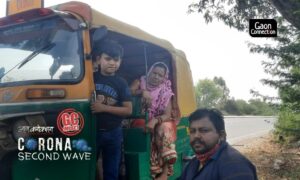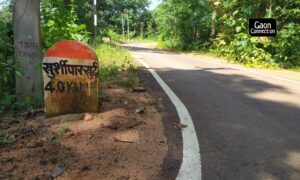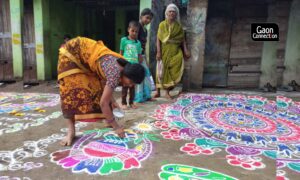Even as global health experts raise concerns over the risks faced by rural areas during the COVID-19 pandemic, and highlight the need for a comprehensive approach by governments to tackle it, a hospital for marginalised communities in remote Jharkhand is leading the way in crisis-preparedness. The Nav Jivan Hospital in Palamu district, a 100-bed medical facility, is today on the frontline of rural India’s fight against COVID-19.
Established in 1961 to serve two of the most under-developed districts of the state – Palamu and Latehar – this hospital has, over the years, taken several proactive steps to gradually add services to cater to the needs of the local communities.
Today, this hospital has the only Acute Care Unit in the region, and also facilities to treat contagious diseases like tuberculosis. Like most rural hospitals, Nav Jivan also faced several challenges in the smooth operation of these facilities, especially with erratic electric supply and regular voltage fluctuations. In January this year, a perceptive move to install a 10-kilowatt peak (kWp) Solar Photovoltaic (PV) system in its premises has given the hospital a new lease of life by improving its electricity capacity substantially and stabilising its operations.
The hospital’s solar intervention has proved timely. As an unprecedented threat by a new strain of coronavirus swiftly spread across the world in 2020, and governments struggled to set up competent medical support in urban and rural areas, this small hospital, about 120 km from the state capital Ranchi, was crisis-ready.
In early April, the state government of Jharkhand identified Nav Jivan as one of the main healthcare facilities for COVID-19 cases to cater to 450 villages in the region. Under the state’s guidance, the hospital has set up dedicated beds for suspected and cases, enhanced its treatment facilities for confirmed cases, and reserved four beds in its intensive care unit (ICU) for critical COVID-19 patients.
This move was well-timed
Palamu is today the 10th of 24 districts in Jharkhand to be affected by COVID-19. On April 25, three positive cases were diagnosed in Palamu’s Leslieganj block and were admitted to Nav Jivan Hospital. Almost a month later, the number of confirmed cases that have been admitted in the hospital are 15; seven of these cases are active while eight have recovered.
Rural healthcare is essential
COVID-19 has expanded its footprint across India, with over 63,624 active cases and 3,435 deaths to date (May 21), and the relevance of a robust and resilient healthcare system has been identified as vital to contain its spread.
Considering that cities are financial centres that drive the nation’s economy, it is not surprising that crisis-response efforts are largely focused on urban areas. However, 66% of India’s population resides in villages, making the need to prepare our rural healthcare infrastructure for the crisis extremely urgent.
Data shows that Tier II and III cities account for nearly 58% of the confirmed COVID-19 cases (as of May 21, 2020). In Jharkhand, where over 75% of the population resides in rural areas, nearly 64% of positive cases have already been confirmed outside Ranchi. The state has been recording a higher-than-average rate of increase in cases. As migrants from cities continues to return to rural and peri-urban areas, their convergence with the local population could potentially heighten the risk of infections, driving the positive cases higher among this already-stressed communities.
On any ordinary day, healthcare centres in far-flung areas face massive challenges due to their remote locations, limited access to resources, medical supplies and equipment, staff shortages, and so on. Now, faced by COVID-19, these hospitals are struggling to cope, with no understanding or first-hand experience of dealing with major disasters, and no wherewithal to guide or manage suspicious cases. The proactive steps taken by Nav Jivan Hospital towards improving its services over the years – and more recently, fortifying its electricity supply with decentralised solar power – has played a significant role in enhancing self-reliance and improving disaster-management capabilities in this rural hospital.
Reliable electricity for crisis-preparedness
Nav Jivan’s progress and advancement in facilities, is not an overnight occurrence but based on years of judicious planning and forethought. For several years, the hospital performed surgeries and child deliveries with flashlights and petromax lamps, due to limited infrastructure facilities. The situation improved considerably when it got three-phase grid connections, however, frequent and long power cuts, and voltage fluctuations continued to hamper operations. In addition, inevitable damage to the electricity grid during the monsoons would lead to prolonged periods of power outages, forcing the hospital to depend on diesel generators which were expensive (annual diesel fuel expenses of up to Rs 10 lakh), and polluting.
Even as the hospital administration searched for alternatives, a doctor in the team made a significant investment early this year, and funded the installation of its first solar PV system. This 10kWp system takes care of some of the most critical needs in the hospital now, functioning as the primary source of power for running equipment required for treating COVID-19 patients. Solar energy powers the ICU ventilators, and can also operate additional ventilators procured from the state for emergencies.
Need for resilient health systems
This pandemic, which has wreaked havoc upon world communities, could be a turning point for India’s rural healthcare landscape, provided we learn from it and endeavour to enhance our capacities through sustainable, energy-efficient systems. A greater focus on the motto ‘no one left behind’ must go hand-in-hand with building resilience and enhancing preparedness of our healthcare systems.
Nav Jivan sets an example of how, with improved access to reliable energy, rural hospitals can upgrade its basic as well as critical-care services. Decentralised renewable energy can empower rural hospitals with uninterrupted services, reduced diesel costs and pollution, and improve financial efficiency. To achieve this, it is important to build national-and state-level dialogue on the need for resilient healthcare delivery systems through integrated policies, sustainable technology solutions and innovative financing models.
WRI India is currently studying the role of energy for development in some of India’s most backward areas. In Jharkhand, it is working with rural hospitals like Nav Jivan to improve access to reliable, sustainable and affordable sources of power. Funded by the IKEA Foundation, this project aims to bring clean electricity to 1 million people in India and East Africa.
The article has been sourced from WRI India. You can read the original article here.



















